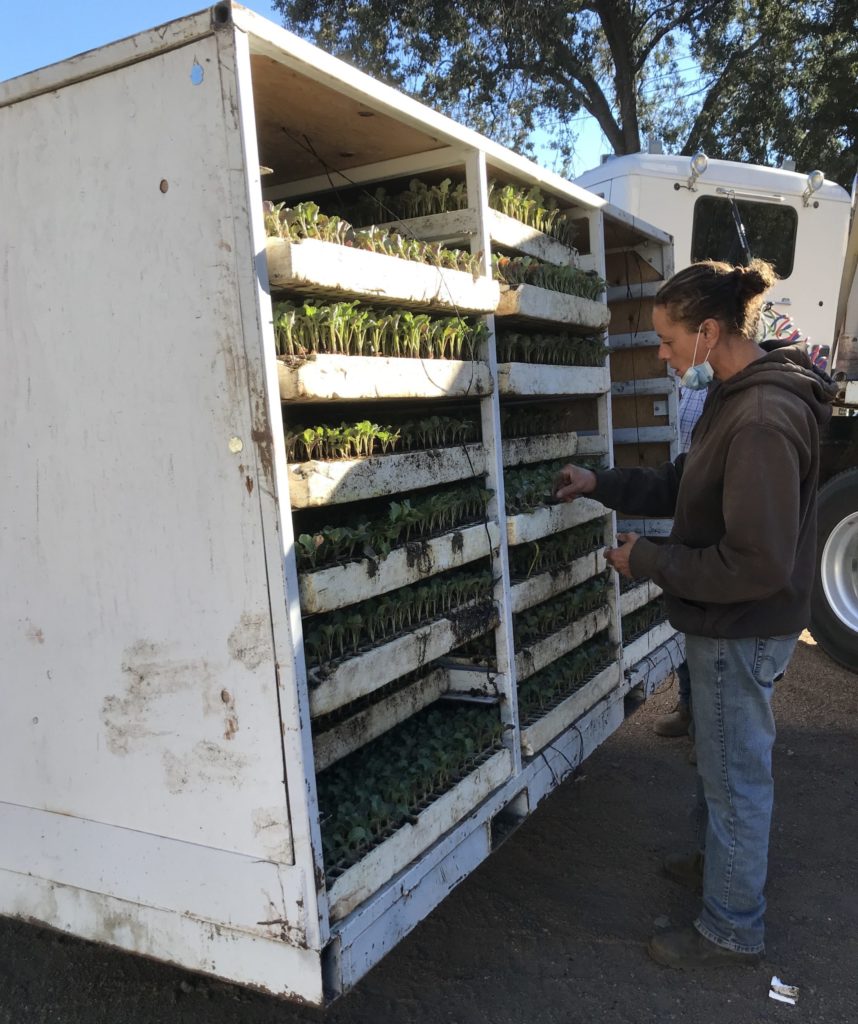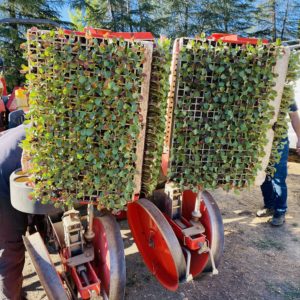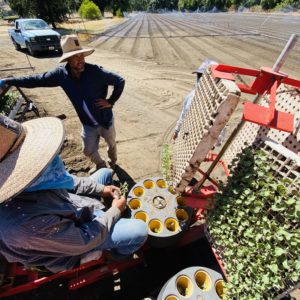
It’s August, which means it’s time to start prepping for fall. It can be difficult to think about the next season and its crops when it’s so hot and we’re so busy harvesting and packing summer produce. However, all of those peppers, tomatoes, and melons will eventually wind down and we need to have the cooler season crops ready to take over at that point.
The tractor crew has been busy spreading compost and prepping beds for seeds and transplants. We grow many of our summer crop transplants in our greenhouses but we don’t grow our fall transplants ourselves; it’s too hot and we have too much else going on. This week we received our first shipment of fall transplants (broccoli) and it went in the ground on Thursday and Friday (documented by Kosuke). Now the trick is keeping those plants alive in the triple-digit temperatures coming this week.


We’ve also been getting ready to plant the fall’s direct-seeded crops. Bags, packets, and buckets of seeds have been showing up at the office over the past few weeks. Ideally, we’d be direct seeding this week, but the direct seeded crops, especially carrots, are much more sensitive to the heat than transplants, so they may need to wait. The timing is tricky; there’s never a good time to plant these crops in the summer heat but the longer we wait, the longer we’re pushing back the first harvest date. Waiting an extra week to plant means more than a week delay in the first harvest because of the changes in daylight hours (and angle) as we move further away from the summer solstice.
Soon enough, we will get the first planting of carrot seeds in the ground. Then they’ll get about an hour of water per day to keep the soil moist enough to germinate the seeds. We’ll cover them with row cover to help keep in the moisture. And soon enough, if we do things right, we’ll have carrots again, a milestone that Full Belly carrot super-fans like myself think can’t come soon enough (more about the carrot growing process here, for those who are interested).
– Elaine Swiedler, CSA Manager
